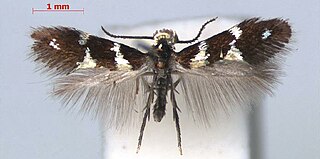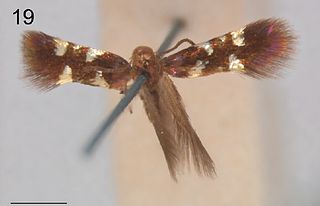| Antispila ampelopsifoliella | |
|---|---|
 | |
| Scientific classification | |
| Kingdom: | Animalia |
| Phylum: | Arthropoda |
| Class: | Insecta |
| Order: | Lepidoptera |
| Family: | Heliozelidae |
| Genus: | Antispila |
| Species: | A. ampelopsifoliella |
| Binomial name | |
| Antispila ampelopsifoliella Chambers, 1874 | |
| Synonyms | |
| |
Antispila ampelopsifoliella is a species of moth of the family Heliozelidae. It is found in eastern North America, including Connecticut, Kentucky, New York, Vermont and Ontario.Records from Italy may refer to Antispila oinophylla .

Moths are a polyphyletic group of insects that includes all members of the order Lepidoptera that are not butterflies, with moths making up the vast majority of the order. There are thought to be approximately 160,000 species of moth, many of which have yet to be described. Most species of moth are nocturnal, but there are also crepuscular and diurnal species.
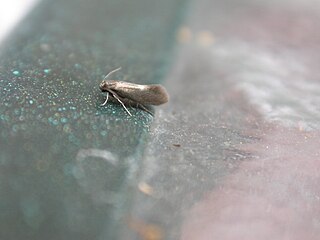
A family of primitive monotrysian moths in the order Lepidoptera, Heliozelidae are small, metallic day-flying moths with shiny smooth heads. In Europe the small adult moths are seldom noticed as they fly quite early in the spring. The larvae are leaf miners and the vacated leaf mines are distinctive because the larva leaves a large hole at the end.
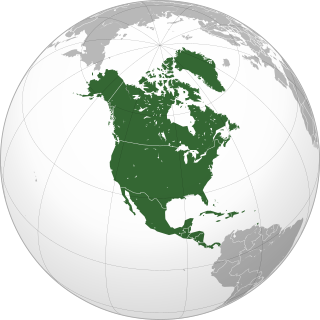
North America is a continent entirely within the Northern Hemisphere and almost all within the Western Hemisphere. It is also considered by some to be a northern subcontinent of the Americas. It is bordered to the north by the Arctic Ocean, to the east by the Atlantic Ocean, to the west and south by the Pacific Ocean, and to the southeast by South America and the Caribbean Sea.
The larvae feed on Parthenocissus quinquefolia . They mine the leaves of their host plant. The mine starts with a relatively long contorted gallery with thin broken frass, or when it runs along margin in a straighter course, later abruptly enlarged into elongate blotch or wide gallery. Here, the frass is dispersed in the middle. The early narrow gallery may be as long as the elongate blotch. The mine can be found in any part of the leaf. The larvae are yellowish white with a black head. [1]
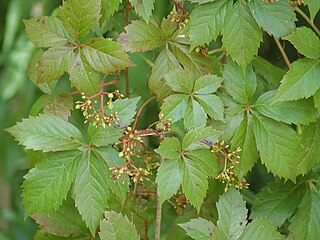
Parthenocissus quinquefolia, known as Virginia creeper, Victoria creeper, five-leaved ivy, or five-finger, is a species of flowering plant in the grape family, Vitaceae. It is native to eastern and central North America, from southeastern Canada and the eastern United States west to Manitoba and Utah, and south to eastern Mexico and Guatemala.

A leaf miner is any one of numerous species of insects in which the larval stage lives in, and eats, the leaf tissue of plants. The vast majority of leaf-mining insects are moths (Lepidoptera), sawflies, and flies (Diptera), though some beetles also exhibit this behavior.
Frass refers loosely to the more or less solid excreta of insects, and to certain other related matter.
